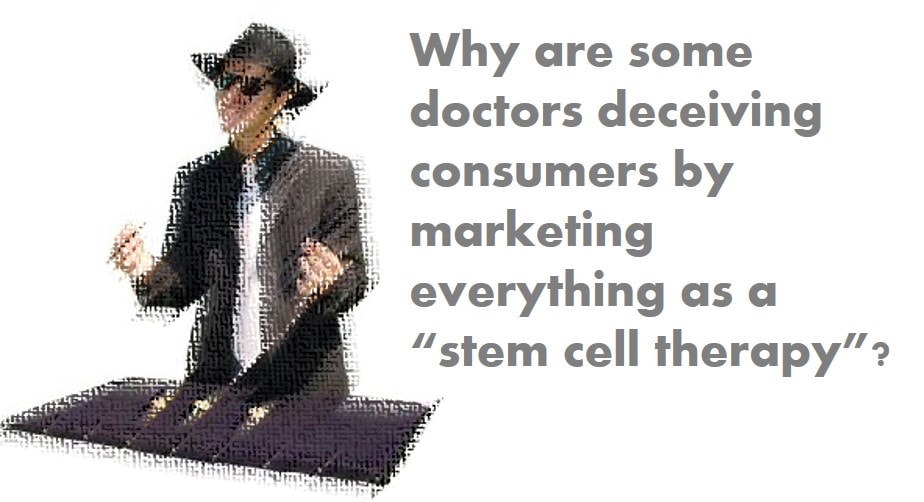What’s the Definition of Stem Cell Therapy?
I’ve just returned from a conference in Florida where I was in charge of organizing and then herding cats for a pre-conference track on stem cells. One of the recurring themes of the day was that some of the participants kept trying to reclassify things that clearly weren’t a stem cell therapy, as stem cell therapy. By the end of the day I was very concerned for patients as if these physicians kept confusing the issue how could patients be expected to keep it all straight?
First, some examples from the day:
1. A gentleman who was using the same fat graft that he had been using for years, but who had met with a regulatory attorney about the legality of calling it’s use a “stem cell face lift”. The attorney rightfully asked that if it wasn’t a stem cell procedure before, how could it be one now? The physician responded that he could sign up more patients that way.
2. A doctor who described to me that he was using blood serum and bubbling ozone through the mixture and then injecting that IV to treat knee arthritis. When I responded that blood, and blood serum, effectively had no significant stem cell populations so that wasn’t a stem cell procedure, he kept coming back with the idea that he had been told it was. After he wouldn’t listen to why it wasn’t right to call this a stem cell procedure, I then tried to explain why he needed to inject the knees to treat knee arthritis and after he seemed not to grasp that issue, I had to walk away.
3. A doctor who was using platelet rich plasma and who wanted to call what he was doing a stem cell procedure. Again, trying to explain that blood had so few stem cells that whatever effect he had gotten in his patients hadn’t occured through stem cells, and failing (because he wanted to use the stem cell moniker for marketing purposes), I had to walk away.
My biggest concern after the day was that some doctors are knowingly deceiving patients about what they’re doing for the sole purpose of having patients believe that what they’re getting is a stem cell therapy, specifically so they can sell more procedures and charge more. So far these seem to fall into a few categories:
1. Doctors using amniotic fluid or membrane that contains no living cells, let alone stem cells, but that never the less brand this as a stem cell therapy.
2. Physicians who use PRP or other blood products that aren’t stem cell therapies but market them as such.
3. Cosmetic and orthopedic clinics who have decided to dodge the whole fat digestion stem cell drug issue by just using a fat graft and calling it a stem cell procedure. As I’ve blogged before, a fat graft likely has no viable stem cells that act on tissue to help repair.
As a result of this new form of bait and switch marketing, I’ve decided to construct a minimum set of guidelines whereby a physician can ethically call a procedure a “stem cell therapy”:
1. A plurality of physicians must agree that the procedure most likely relies on the action of stem cells to achieve it’s therapeutic goals.
2. Viable stem cells in significant quantities must be present in what is being injected into the patient. Significant quantities defined by #1.
The upshot? This is a new wrinkle in the stem cell wild west. Hopefully, we physicians can agree on the minimum definition of a stem cell therapy to protect consumers!

If you have questions or comments about this blog post, please email us at [email protected]
NOTE: This blog post provides general information to help the reader better understand regenerative medicine, musculoskeletal health, and related subjects. All content provided in this blog, website, or any linked materials, including text, graphics, images, patient profiles, outcomes, and information, are not intended and should not be considered or used as a substitute for medical advice, diagnosis, or treatment. Please always consult with a professional and certified healthcare provider to discuss if a treatment is right for you.
